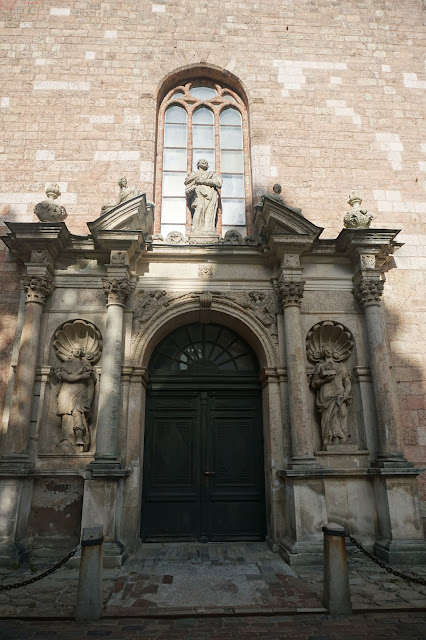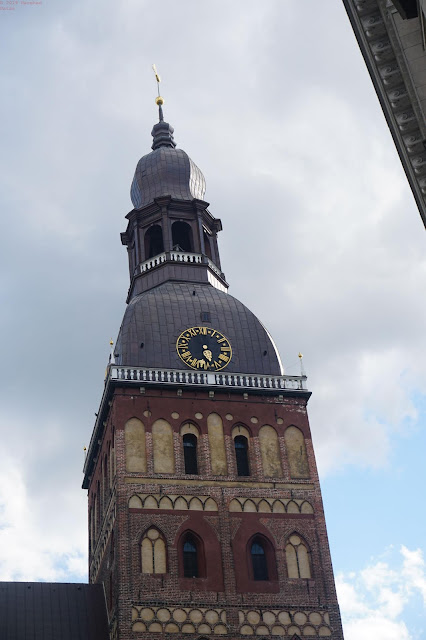Riga Travel Blog
Riga is the capital city of the Baltic state of Latvia. It also is the biggest Baltic City with about 7 Lakh population. Some interesting statistics are, Riga is home to 1/3 of Latvia’s and 1/10 of total Baltics States’ compound population.
Situated at the Gulf of Riga, at the mouth of Daugava river on Baltics Sea. Riga is almost the same age as Tallinn. This city was founded in 1201 AD. In its long existence, Riga has seen rules of Sweden, Germany, Russia, USSR, etc. till Latvia achieved its independence from USSR in 1990.
Riga of today is a modern city which generates about 50 % of Latvia’s GDP. It is a major Baltic Port and the main gateway for the export of wood, Software, Metallurgy, etc.
Riga is a well-connected city. It has flights coming from over 80 countries which come to Riga International Airport.
It can be reached by sea from Germany and Scandinavian Countries. It has rail connect with Moscow and St Petersburg in Russia.
It is also well connected by highway network and bus services operate between all three Baltic States. Bus presents a low-cost option for travel across Baltics. Most buses in Europe are Volvo kind of airconditioned and comfortable ones with a toilet and some service providers also provide hot tea and coffee during the journey.
Stay Options.
Riga gets over 3.5 million visitors a year. With that kind of influx of the visitors, the stay options available are plenty. They meet the need for all types of travellers with the rentals that they can afford. There are a variety of hotels, highly rated hostels and B & Bs.
There are small boutique hotels in and close to the old city, mostly in old historical buildings. A hotel in which we stayed was in an over 100-year-old building with real wood furniture. It was beautiful and it was very close to the Old city.
Local Travel.
Riga has plentiful public transport. There is also an option of hiring Cars and Bicycles. However, for all the sights that would be covered in the three-part blog. except for Day trip (being covered in Part III), no transport is needed.
All these places are convenient to walk and the walks are pleasant in Riga with the places to visit and parks, small and big are intermingled. My recommendation is to walk but for those who can not, there is public transport.
What is there to see in Riga?
Riga has enough to see for two to three days. I would be covering this trip in three parts. Part I covers the Old City. Part II covers the modern part of Riga. Part III covers the day trip from Riga.
Here is the Part I of Riga Travel Blog
Riga
Old City, Vecriga.
Swedish Gate
Three Brothers
Cat Building
Saint Peter’s Church
Riga Cathedral
House of Blackheads
Town Hall Square
Riga Old City, Vecriga.
Should we start our trip? Let us go.
Riga Old Town.
Riga Old Town is as historic as its neighbour, Tallin. Established in 1201 AD, Riga was part of Hanseatic League (Commercial and Defensive Guild of merchants of Europe, particularly North-Western and Central Europe) and was part of a busy and important trade route. It had fortification for protection, of which, only a small portion known as Swedish Gate remains. Cobbled streets, historic buildings and interesting anecdotes are Riga Old Town’s forte. Some of the fun photos are given below for readers to get an idea of fun the old city is.
 |
| A Mascot of a Bar in Riga Old Town |
 |
| A Cow represents this shop |
 |
| Such a Grand Building |
 |
| Sculptures and Floral Designs |
 |
| Almost Art Deco Style |
Swedish Gate.
Once one of the gates of fortification of Riga, Now it stands as a monument to that Fortification. It has almost merged with other structures around it. This gate may look insignificant compared to the structures around it but it is one piece of historic Riga.
Three Brothers.
“Three Brothers” are three "side by side" buildings built at different times, however, they are the oldest houses for living in Riga. The first house (Brother) was built in the 15th century and the other two were built in the 17 century. Interestingly, they were built by descendants of the same family.
 |
| Three Brothers, Oldest Dwellings in Riga |
Cat Building.
It is a building built opposite a building housing the City Guild, a merchants chamber with mostly German merchants. The owner of this building was denied membership. The Owner got angry and got two Cat statues mounted on two turrets of his building with the cat’s tail towards the Guild Building. He turned around the cats only after he got the membership of the guild (or some say ordered by a court). However, these cats are now a virtual symbol of Riga and are widely photographed.
Saint Peter’s Church.
This church was built in 1209 AD in stone masonry. That is the reason some of the structure of this church dates back to that time unlike other churches in Baltics which were built using wood and got burnt down. This church also has had destructions of some parts and renovations in part or full over its long life.
Important - The Church tower is the tallest structure in Riga at 123.25 meters and it can be climbed up to 72 m. Reach at least 30 min before the official closure time as the entry to the tower closes 30 min before the closure time. We missed climbing it
This Church has had 6 Roosters (weathercock) since 1500 AD but each one of them was either destroyed in the lightning, fell off due to storms or fell off due to ageing. Present weathercock has been erected in the year 1970. This church had closed for the day by the time we reached there but it is beautiful from inside and has a museum too.
 |
| Tall Tower is Difficult to fit the Frame |
 | ||
Entry Gate to Saint Peter's Church
|
Riga Cathedral.
Built a few years after Saint Peter’s Church, Riga Cathedral was a religious place, a school and a concert hall rolled into one. Considered the largest Medieval Church in Baltics, Riga Cathedral also has a similar history like Saint Peter’s Church, of Destruct and reconstruction.
House of Blackheads.
This place is a building erected in 1334. It was a recreation and meeting place for Guild of bachelor Marchnts and ship owners of foreign origin, mostly germans. This also served as party hall, banquets hall and ballroom. It derived its name from Brotherhood of Blackheads, a name derived from the patron saint of the guild, Saint Maurice, who is depicted as a black soldier in Knight's hood. House of Blackheads, located at the Town Hall Square is, in present times, a museum worth visiting.
Town Hall Square.
Pivotal in Riga’s history since 1213 century, the Town Hall Square has been the place for people of Riga to meet, take procession out and have various celebrations. It was completely destroyed in German bombing and has been extensively rebuilt in later years. Three-story Town Hall and the House of Blackheads are the major landmarks. It is a lively place with eateries, etc. It is worth a visit.
With this, we have finished our tour of the old and historical city of Riga. We have seen most of the important places in the old city, however, there are other places too, less famous and significant but surely historical and beautiful. Visitors can explore them too if they have time in hand.
Second Part of the Travel Blog to Riga covers the modern part of Riga.











You are definitely rekindling my travel buds.. Beautiful cities and just waiting for covid to ease to travel to Russia.
ReplyDelete